Belden's Iconoclast Series II Audio Cables
High-Definition Audio Cables That Get Out of the Way
Imagine the possibilities when a highly skilled cable engineer and designer, who just happens to be an audiophile, partners with one of the world's largest and most technologically advanced wire manufacturers to delve into the subtleties of audio cables. It's a unique combination of knowledge and resources not often seen in the high-end audio industry, resulting in an impressive range of products.
The company is Belden Inc., founded in Chicago in 1902 and recognized as a world leader in cable design and production, with assets worth over three billion dollars. The cable engineer/audiophile is the now-retired Galen Gareis, for 35 years the Principal Product Engineer at Belden. He actively contributed to multiple Belden patents during that time and is responsible for designing the Iconoclast cables as well as being credited with their patents.
Age-old Discussions
Audio enthusiasts often engage in heated debates regarding their preferred technology. From tubes to solid state, digital to analog, streaming to hard drive playback to CD playback, not to mention Class D, etc. Each technology has followers eager to discuss and hear the other side's arguments. However, in my experience, when the debate shifts towards whether cables make a difference in system sound quality, it typically results in entrenched believers and nonbelievers who rarely gain any new insights from a discussion.
If you, like myself, have noticed the impact of cables on your system's tonality, dynamics, and the overall music listening experience, then read on. If you believe otherwise you can stop reading, or there is a third option.
Perhaps you are "cable agnostic." You know what you have heard (or not heard) with cables in your system and are seeking an explanation for your experiences. In this case, I invite you to visit the Iconoclast website for potential enlightenment. The company is exceedingly transparent about its methodology for designing, researching, and developing its products. It provides a collection of white papers that offer in-depth information on the various parameters that Galen invested over two years in studying, leading to the creation of the Iconoclast cables. This transparency is a rarity in the audiophile cable industry and a refreshing breath of fresh air.
"It is, we think, one of the hallmarks of cable voodoo that its methods and notions are always obscure -- proprietary terms of uncertain meanings on the technical side, and vague promises framed in the most poetic and inspirational terms on the subjective side. We don't aspire to rewrite the laws of physics, or to craft lovely descriptive phrases. This is engineering, and the results of audio engineering are in the domain of sound. We open the book to you on our engineering; as to sound, we invite you to decide whether you like what you hear." Iconoclast website.
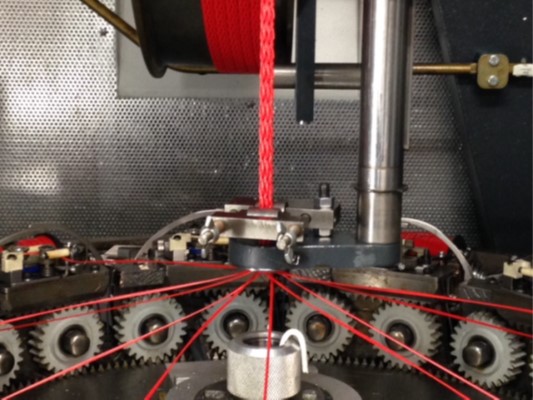 The Design
The Design
"Most engineering problems are basically problems in optimization, and if you don't know what it is you're trying to optimize, you're flailing in the dark." Galen Gareis
During the initial phase of creating Iconoclast cables, Galen spent countless hours measuring resistance (R), inductance (L), and capacitance (C) and discovered that cables with identical R, L, and C values could have different sound qualities. He attributed the differences partly to time (velocity propagation Vp) and the relative speeds of signal components as they traveled down the signal path.
He then conducted experiments fabricating more than 70 handmade prototypes, all the time documenting his measurements. The goal was to develop designs that effectively balance the frequency-dependent effects on signal timing. After critical listening and systematic research, he settled on the patented design that resulted in today's Iconoclast cables. Creating the cable design was one issue, but the subsequent challenge was manufacturing them. The process was complicated because no existing wire machine set-ups matched Galen's unique design specifications. Fortunately, Belden Inc. stepped in and from scratch created custom set-ups to meet Galen's needs. Hey, it's nice to have a rich uncle!
Here is a brief overview of the Iconoclast Series II cables' design so as not to overwhelm you or require you to brush up on your calculator skills.
Galen meticulously details his cable design in the Iconoclast Technical section for those of you inclined to do a deep dive.
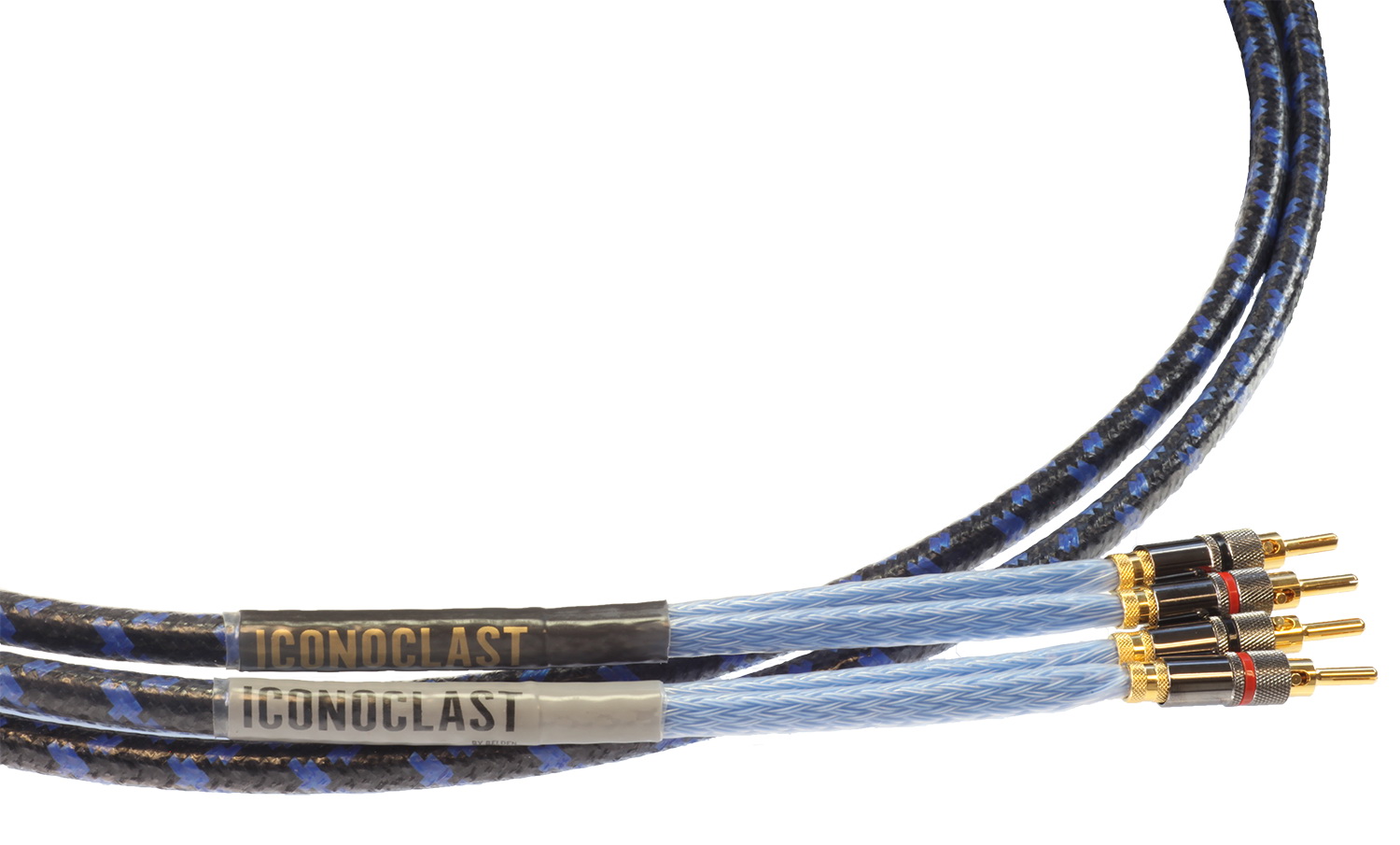
The Iconoclast Series II Speaker Wire Design
The Iconoclast Series II speaker cable has a sleek, square design that belies its complex inner workings. Forty-eight conductors comprise each polarity leg, extruded together into Teflon®-insulated "bonded pairs." These pairs are then braided into a basket-weave configuration and flattened into a rectangular shape. The two polarity legs are then placed back-to-back, and the cable is finished off with a nylon braid and FEP outer sheath. Though it's a challenging process with 384 wire strips per pair of speaker cables, this design achieves the precise electrical characteristics specified by Galen.
The Series II speaker cable comes in two types of copper, Tough Pitch Copper (TPC) and the Silver-Plated Tough Pitch Copper (SPTPC), that I auditioned.
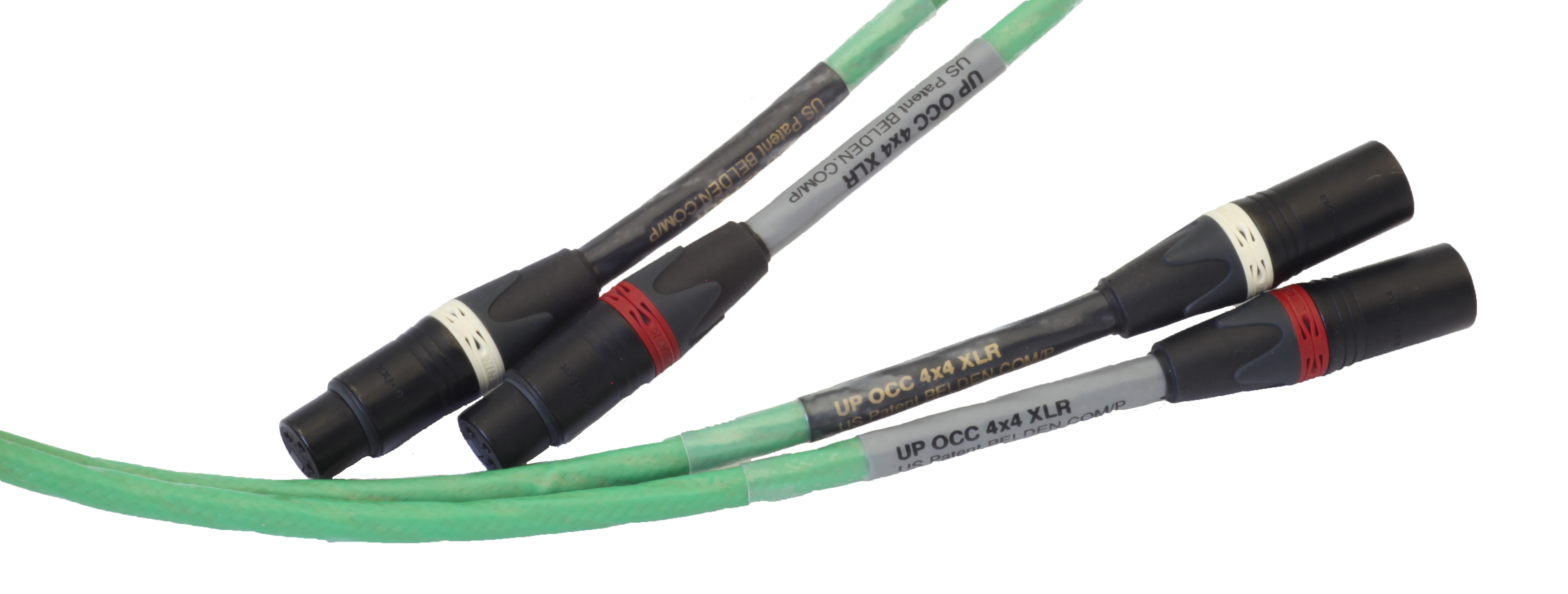 The Iconoclast Series II XLR Interconnect
The Iconoclast Series II XLR Interconnect
The Iconoclast XLR cable is not your typical star-quad cable. While a typical star-quad XLR cable has four conductors, each insulated in a dielectric and helically cabled together, Iconoclast has some unique features and is offered in two variants. In the original 4x1 Iconoclast XLR, rather than individual conductor insulations, each 24 AWG bare copper conductor is suspended in air-tube chambers, centered using a spiral glass and Teflon spacer filament. These four chambers are separated and bounded by a clover-leaf-style central spline, enclosed in an outer FEP layer, covered in a bare copper high-coverage braid shield, and finally jacketed in FEP.
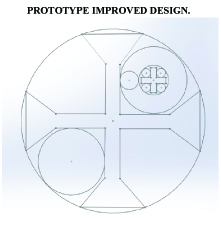 For the Series II 4x4 XLR, instead of individual conductors, each of the four chambers features four 30 AWG conductors arranged in a mini quad configuration. The wires are uninsulated, and the dielectric is mostly air. A spline separates the resulting four mini star-quad cables, creating a larger star-quad cable.
For the Series II 4x4 XLR, instead of individual conductors, each of the four chambers features four 30 AWG conductors arranged in a mini quad configuration. The wires are uninsulated, and the dielectric is mostly air. A spline separates the resulting four mini star-quad cables, creating a larger star-quad cable.
The four 30 AWG star quads of the 4x4 cable effectively reduce common mode noise without the high capacitance typically associated with star-quad cables. The inner, smaller star quads help lower inductance.
Copper options include Tough Pitch Copper (TPC), Oxygen Free Electrolytic Copper (OFE), or the OHNO Continuous Cast Copper (OCC) that I auditioned.
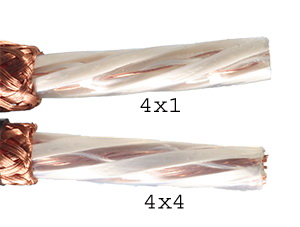 Terminations are welded ultrasonically rather than being either gas or arc welded. This technology utilizes ultrasonic vibration to produce heat, enabling precise control over the amount of heat required. This results in a strong joint with minimal contact resistance without the need for additional materials like solder. The joint remains virtually oxygen-free by fusing the copper or silver-plated copper wire directly to the connector.
Terminations are welded ultrasonically rather than being either gas or arc welded. This technology utilizes ultrasonic vibration to produce heat, enabling precise control over the amount of heat required. This results in a strong joint with minimal contact resistance without the need for additional materials like solder. The joint remains virtually oxygen-free by fusing the copper or silver-plated copper wire directly to the connector.
Lastly, although Belden owns the patents for the Iconoclast design and produces most of the cable, Blue Jeans Cable, a completely independent company, handles the cables' termination, assembly, distribution, and marketing.
Blue Jeans Cable
The husband-and-wife team of Kurt and Pam Denke formed Blue Jean Cable in 2002. According to Kurt, the company name originated "when it was just the two of us at the dining room table, as a kind of contrast to what we saw as a lot of pseudo-technical sales talk in the consumer cabling business."
Blue Jeans Cable has built a solid reputation over the years as an outpost of sanity in the wild west landscape of audiophile cables by offering top-quality construction and customization paired with fair pricing determined by the cost of materials and labor and not by "what the market will bear."
In late 2018, BJC entered into an agreement with Belden Cable Company to market, distribute and sell the Belden Iconoclast brand. Kurt addressed the "elephant in the room", writing a short paper about his company's decision to assume this role for a "high-priced spread". He wrote:
"One of my great fears going forward is that people will think that we, who have always been a voice for good sense in audio cabling, have had some sort of personality change. I'm here to assure you that while Iconoclast is not in our traditional pricing zone, that's not the case. We've been asked countless times to take on various "high-end" cable products for various people, and we have always said no. It's not that we reject the idea in principle but that we always find ourselves rejecting it in practice. Usually we have just not found the technical case convincing, and sometimes we've found it downright bizarre.
But with Galen's technical papers at hand and with the testimonials of quite a few happy customers, we think that this is the real deal. Our personality will be the same as always. We won't write sonnets about the cable or promise that the bass will be more chocolatey (around 78% cacao content). We'd rather let the product do what it does, and see what people say.. I never tell anybody what he's going to hear. I'm not going to tell anybody that his system will sound better with Iconoclast in it – What I will say is that it's here, we have it, it has the best and most well-attested engineering work done on it by a man who is one of the nation's top experts on electronic communications cabling, and that anybody who would like to have a listen to it ought to do just that. But if somebody tells me that he hears no difference, I'm as ready to accept his word about what he hears as I am to accept anybody else's word on the same subject.
How refreshing is that?
Cables Under Review
Following some very informative phone conversations with Iconoclast Sales Director Bob Howard, in which we discussed various cable audition options, we settled on two pairs of Series II OCC XLR and a 10-foot pair of Series II SPTPC speaker cables. One set of XLR cables linked my PS Audio DAC II to either my VAC Master preamp or my SMC Audio VRE-1C preamp. The other set connected the preamp to my SMC Audio GT23 Ultra amplifier or to the VAC Signature 200iQ amplifier.
The Series II SPTPC speaker cables went to the Acora SRC-2 speakers I have in-house for my upcoming review. During the six-month review period, I used various sources, including my Jay's Audio CDT3 MKIII transport, Studer A810/King Cello open reel, Innuos Zenith MK III, and AMG Viella V12JT Turbo/Micro Benz LP-S vinyl front end. To assess sound quality differences I rotated various brands of cables along with the Iconoclast Series 2.
Several sonic qualities consistently stood out when the Iconoclast Series 2 cables were in my system. Before discussing them, let me clarify two oft confused terms: "resolution" and "transparency".
Resolution: The ability to distinguish individual sonic details. The perception of increased resolution is often produced when a component (including a cable) artificially emphasizes detail, which typically produces a sterile, fatiguing sound. The higher the actual resolution, the closer the musical performance feels to "real".
Transparency: The ability to "see" within the recording. This is influenced by various sonic traits such as resolution, spatial detail, dynamics, and speed. You can have resolution without transparency, but you can't have transparency without resolution.
One last point. Although I haven't listened to every cable available (which is quite impossible), I have a long history, extending back to 1979, when I was one of Kimber Cable's first dealers. I will not forget Kimber 4PR speaker cable's sonic impact on our double Advent setup! It was the singular experience that started me down this road. Throughout the ensuing years, we were dealers for most of the prominent cable providers, and I learned the valuable lesson of not being swayed by the price, appearance, or advertising claims of audiophile cables.
The Sound
Congratulations on sticking with me! Or if you're like 50% of the readers out there who skip straight to the conclusion section of an audio review, welcome aboard!
Now it's time for the payoff. How did these cables impact my system?
After hundreds of hours of listening, the overriding character I get from the Iconoclast Series 2 cables is one of resolution and transparency while maintaining a neutral timbal balance. These qualities aren't limited to higher frequencies but extend into the midrange and bass regions. This defining characteristic, plus superb dynamics, make for a truly outstanding cable design.
Let's delve deeper.
Having spent decades in the audio-video industry, I often draw comparisons between audio and video. It's common for people to place greater trust in what they see rather than in what they hear. Using these Iconoclast cables is much like upgrading from 1080P to 4K in terms of increased resolution. Before 4K existed 1080P signal viewers might try to improve its appearance by adjusting parameters in the TV set-up menu like sharpness, motion, and detail. Although some combinations of these settings may enhance picture quality, nothing could actually increase the fixed 1080P resolution. 4K images contain four times as much information as 1080P, which on a screen of sufficient size has the ability to deliver previously unseen details. Cables designed to enhance audio detail often emphasize existing details rather than revealing new ones, which is similar to (over) adjusting 1080P TV settings.
The Iconoclast cables are more like swapping a 1080P display for one that's 4K, thereby exposing more intricate details without overemphasizing them.
For instance, with the Iconoclastic cables installed, when listening to Golden Earring’s Radar Love or Gregory Porter's Liquid Spirit, the tambourine hits are more informative and detailed. When assessing a recorded tambourine's sound, it's not just about hearing the "zills" (the individual ringing metal discs) it's also about perceiving more information about them, such as their spatial separation and quantity. This is a subtle yet essential distinction the Iconoclast cables produces. The combination of improved sound staging, dynamics, and sound space recreation helped my system achieve a new level of transparency.
From the opening guitar notes of Chris Stapleton's Whiskey and You, I knew I had the proverbial "open window" into the recording. As I listened to the delicately touched strings, the resonant cavity of the guitar revealed a dense texture and substance. The openness of the sound allowed me to hear subtle dynamic shifts and crystal-clear micro details. However, when Chris "talk-sings" the line "that's the difference," I was moved by the sound's human element, which fully conveyed the emotion of the phrase. None of the other available cables, produced as complete a picture in this regard as the Iconoclast. The Analysis Plus Silver Apex and eXemplar eXception cables came close in resolving the upper frequencies, but both fell short in portraying the guitar texture and body. On the other hand, the Audience Front Row cables showcased the organic quality of the guitar and the rich body of Chris's voice but, ultimately, were not as detailed or open as the Iconoclast.
As I listened on this Chesky demo disc Best of Chesky Jazz and more Audiophile Test Volume 2 to the Sara K Miles Away track, I was impressed by the spatial accuracy. Sara K sets up just behind the plane of the speakers and the aural clues made me feel as if I was sitting in a cozy, intimate club setting, enjoying the music. In addition to Sara's guitar, the percussion and bass had appropriate opens and decay. The "breathiness" of Sara K.'s voice was notable. There are a couple of points during the song when you sense she is right on the edge of "gasping" for air between lines. While I have heard other cables capture this, the Iconoclast cables present it as a human quality rather than as a recording artifact.
During an evening listening session, a friend in the mood to hear something fun and lively requested the Header extended remix of "I'm Good (Blue). I guess it falls under Techno Pop, but I call this "assembled music." I must admit that it was quite a ride.
The Iconoclast cables, better than any of the other cables I tried, easily deconstructed the track, revealing how it was put together and exposing the multiple tracking and phase games used to get the desired effect.
The powerful dynamic swings and intense bass the cables let pass do not diminish the clarity of other instruments/effects. They remained individualized and detailed throughout the complex musical buildup. This track got my heart racing. (Language warning).
I very much enjoy the Eric Clapton album One More Car, One More Rider, recorded in 2001 over two consecutive nights at the Staples Center in Los Angeles. Live recordings are so much more engaging and interesting than those produced in a studio. If I had to pick one song to demonstrate the difference Iconoclast cables can make in a system, it would be "Wonderful Tonight."
From the first note, I felt as if I was in the arena, able to sense the texture of the air and feel as if I was among the crowd. The combination of Clapton's lyrics, guitar skills, and the reverberation of his voice creates a beautiful blend. The song truly comes alive halfway through as Steve Gadd's skilled drumming, Billy Preston's B-3 organ accents, and Nathan East's steady well-defined bass lines gradually gel alongside David Sancious's impressive melodica midi-keyboard solo. Clapton adds his guitar to the powerful crescendo, produced an experience so captivating that I never wanted the song to end. The Iconoclast cable was unmatched in providing me with a complete and emotional listening experience.
It's About Time-ing
As A Wilson Audio Specialties dealer, I had the privilege of participating in the pre-show set-up of the company's 2012 RMAF room. The event marked the debut of the new Alexia loudspeaker, which included the feature that allows for adjusting the placement of the tweeter in relation to the midrange driver.
Once the Wilson set-up team finalized the speaker location, David Wilson arrived to assess the sound quality. Dave sat down to evaluate the speaker set-up, equipped with a notebook and his preferred playlist. Playing a solo classical piano track he detected that the upper register sounded a bit harsh and unsatisfactory. He requested a technician adjust the tweeter head one notch forward and then replayed the track. Then, because the timing of the transients reaching the listening position from the two drivers was time-aligned, the Alexia produced a smoother and more coherent piano note, transitioning seamlessly from the attack to the sustain.
When comparing cables, those that are bright and fatiguing can be compared to the misaligned Alexia speaker. Iconoclast cables are more like the time-aligned Alexia, delivering music with a cohesive and consistent top-to-bottom presentation.
Caveat Emptor
Like any high-performing product that pushes the limits, the supporting equipment must be equally capable or the cables might expose any flaws in that gear. These Iconoclast cables are exacting and unforgiving, and oh so truthful. If your digital front end has a weakness, prepare to hear about it. These are not cables you use to tune your system to cover flaws. They are cables you use to tell you about your system and lead you to correct flaws. Like any parent, we don't like to hear that our kids acted poorly or were disrespectful, but we appreciate it when someone tells us so we can take the necessary corrective action.
On the other hand, on a well-behaved system, the cables can reward you with an insight deeper into the music than you have may have previously experienced, which is precisely what they did installed in mine. Time and time again, I would rotate cables with the Iconoclast and determine that, while the other cables may possess similar qualities in some areas, overall, in my system, they never bettered the Iconoclast cables
Final Thoughts
What sets these cables apart from many others is their ability to offer this high-quality resolution and transparency without causing listener fatigue or producing harsh sound. Even as the Iconoclast cables exposed small, previously unheard details captured by the microphone, they were rendered as intriguing rather than as distracting, which allowed me to maintain an emotional connection to the music. Iconoclast cables make me feel directly connected to the source, free of intermediary barriers.
Will you like them? Hah! I have been doing this for far too long to take a bite of that apple!
However, I will offer the quote below from the Iconoclast website and Bob Howard, where, by taking advantage of the company's 30-day unconditional return policy, you are encouraged to audition the cables and decide for yourself.
Submitted for Your Approval
"These designs are all, in a certain sense, "impractical." They represent optimization of design constrained only by what can feasibly be manufactured, without regard for cost of manufacture -- engineering unconstrained by budget. As a result, they are substantially more costly to make than conventional products are, while also being priced substantially below some of the stratospheric prices one sees in the high-end audio world. Whether this is an expense which will be worthwhile for you is precisely the judgment that only you, not we, can make; but if you are seeking the best in audio performance, we encourage you to give Iconoclast a try."
The bottom line is that the Iconoclast Series II cables give me exceptional technical performance while deepening my engagement with the music beyond what I have previously experienced. The combination of traits has earned them a permanent place in my reference system. Both from my reviewer's standpoint, where one needs the cable to get out of the way and allow the component under review to show its colors, or from my music lover side, where I want to sit down and be as closely connected to the performance as I can, these cables, for me, cover both bases.
Highly recommended for your risk-free consideration.
Belden Iconoclast Series II XLR OCC copper 3 foot pair $ 2050.00
Belden Iconoclast Series II SPTPC speaker cables 8-foot pair $ 3020.00
Specifications
Manufacturer Information
Manufacturer Contact Information
Website: http://www.iconoclastcable.com
Phone:
Sales inquiries (Bob Howard):
(850) 860 0940
E-Mail:
Sales inquiries:
Bob Howard, bhoward@iconoclastcable.com
Iconoclast Cable
3216 16th Ave W
Seattle WA 98119


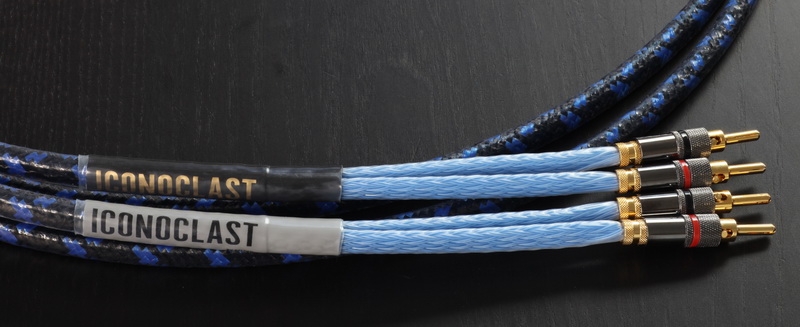







































.png)








